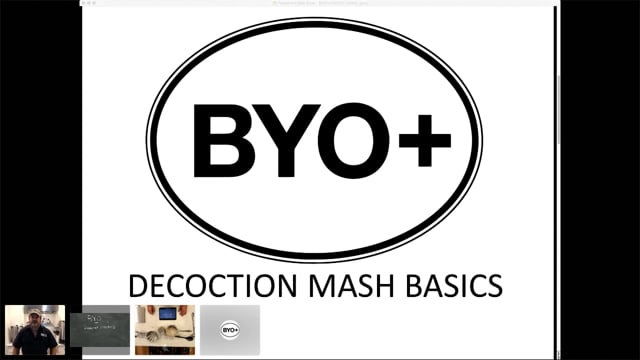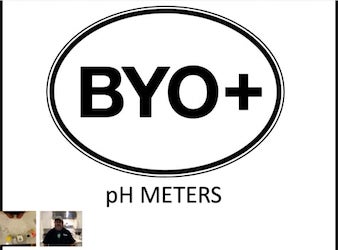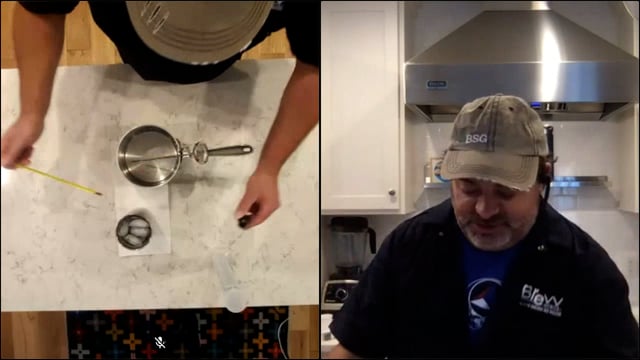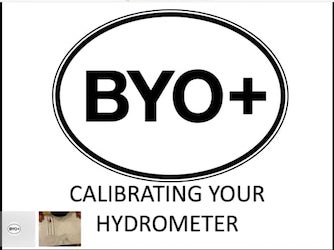Videos
Browse Featured Videos
Decoction mashing is a time-honored German brewing technique that intimidates many brewers. Brew Your Own Magazine’s Technical Editor Ashton Lewis walks you through the basics of decoction including how to do it
Learn the best strategies and techniques to use when adding fruit as an ingredient to your beer with Brew Your Own Magazine’s Technical Editor Ashton Lewis.
Hazy beers are all the craze. Brew Your Own Magazine’s Technical Editor Ashton Lewis walks through his favorite tips for brewing hazy beers.
When yeast ferments beer, it produces more than 500 different compounds. Many of these compounds give beer its characteristic flavor and aroma. One of these compounds — one that is usually considered
Hops contain hundreds of components including alpha and beta acids, hydrocarbons, thiols, tannins, enzymes, terpenes, and glycosides. The exact compounds and amounts differ depending on variety and growing conditions. Even with ideal
A thermometer is only useful when it is accurate. Learn how to calibrate the thermometers you use for your brewing with tips from Brew Your Own Magazine’s Technical Editor Ashton Lewis.
Your beer evaluation skills can be one of a brewer’s best tools. Learn how to not only drink or taste beer, but how to evaluate beer like a professional brewer. Learn how
Join Brew Your Own’s Technical Editor Ashton Lewis with step-by-step instructions how to properly clean and sanitize your homebrew corny keg.
Triangle tests can be a valuable way to help better evaluate different beer when conducting experiments with ingredients and techniques. Brew Your Own Magazine’s Technical Editor Ashton Lewis shows you how to
Brew Your Own Magazine’s Technical Editor Ashton Lewis shows you how to conduct your own forced fermentation tests to help determine in advance the expected finishing gravity of a batch of beer
Adding hops right after the boil finishes has become an important technique to pack a big hop aroma in beer. Known as both hop stands and whirlpool hopping, learn the best practices
The word “biotransformation” has gotten a lot of buzz as brewers look to fermentation — and specifically, yeast — to transform the aroma of hops. Learn from Brew Your Own Magazine’s Technical
If you know the viability of the yeast you are pitching into your wort you can be more confident your fermentation will go as expected. One of the most popular ways brewers
Knowing the viability of your yeast is key to running strong beer fermentations especially when you are reusing yeast from a prior batch. The traditional way to count yeast cells requires a
Getting accurate hydrometer readings is critically important to brewing better beer. However sometimes it’s really tough to get the best reading you can – especially after your beer has some carbonation built
Learn how to dial in your grain mill to produce the right kind of grist for your needs and your brewing system. You’ll see the difference between coarse and fine and what
Agar Plates can be used to streak and isolate yeast strains for your brewing. Instead of buying these agar plates, Brew Your Own Magazine’s Technical Editor Ashton Lewis shows you how to
Yeast is everywhere, on plants, on fruit, in the air…and in beer. Streaking an agar plate is a quick and easy way to isolate yeast, to check for purity, and to re-culture
Join Brew Your Own’s Technical Editor Ashton Lewis as he shows you how to properly calibrate your scale for accurate beer ingredient measurements. Your numbers are only good if they are right
By using the methods of home canning, you can make and store wort for use whenever you want. Home canning is a simple and effective process for preserving starter wort in handy,
When considering what mash thickness you want for a brew, know that the thickness you choose determines the range of temperatures needed for the correct degree of fermentability in your wort. Mash
Browse Videos
Topic
Equipment · Brewing Tips · Brewing Science · Recipe Calculations · Kegging · Cleaning/Sanitation · Ingredients · Malt · Grains · Specific Gravity · Beer Evaluation · Beer Styles · Clarity · Hops · All Grain Brewing · Mashing · Fermentation · Racking · Yeast · Carbonation · Lagering · Aging
Popular Searches
Decoction mashing is a time-honored German brewing technique that intimidates many brewers. Brew Your Own Magazine’s Technical Editor Ashton Lewis walks you through the basics of decoction including how to do it
Learn our favorite tips when dry hopping your beers from Brew Your Own Magazine’s Technical Editor Ashton Lewis.
Closed vessel racking is a useful skill to transfer your beer between containers without any exposure to outside oxygen. Brew Your Own Magazine’s Technical Editor Ashton Lewis walks you through this technique.
Join Brew Your Own’s Technical Editor Ashton Lewis with step-by-step instructions how to properly clean and sanitize your homebrew corny keg.






























